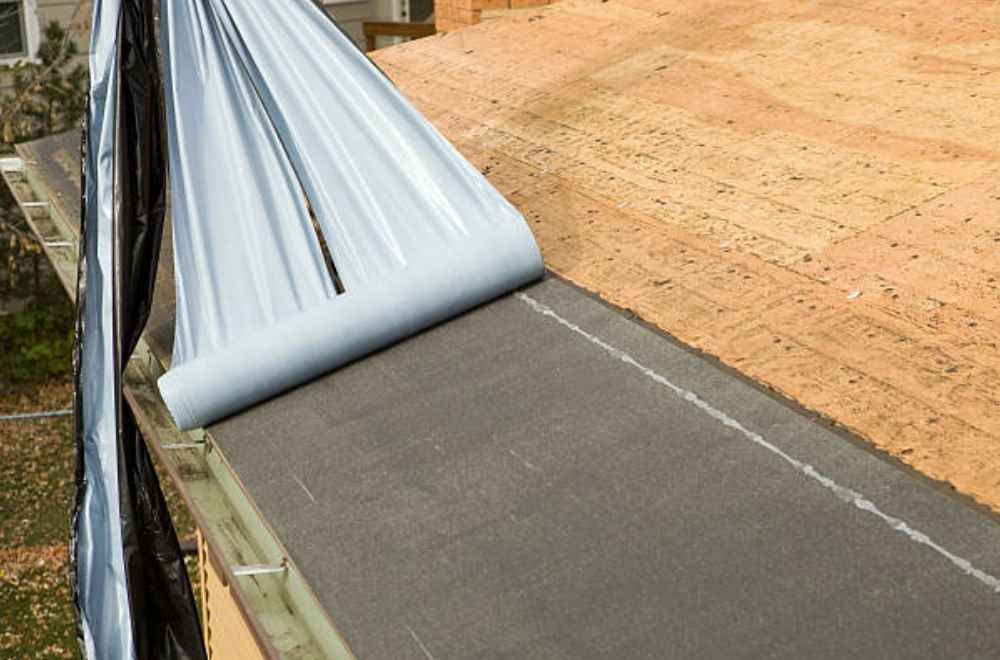Water is one of the most essential elements on Earth, and without it, we wouldn’t survive. But as life-giving as water can be, it can be incredibly destructive too. We all know how significant weather systems such as rainstorms, tsunamis, and the like can wash over an area, cause widespread destruction, and disappear instantly.
When it comes to your home’s roofing system, water isn’t something you want to welcome. Overexposure to water and moisture can lead to the growth of moss and mold, the deterioration of your roof’s structures as well as create leaks in your home.
There are many features in place to protect your roofing and home from the damaging effects of water, including your gutter systems and flashing and underlayment.
Your roof underlayment is essentially the last line of defense against water before it begins to affect your roofing structure. The roof underlayment is installed directly on your roof deck, and it prevents water from seeping through your roof deck and into your home. The underlayment can be made from varying materials, each offering your home different advantages.
At Integrity Pro Roofing, we understand the importance of a functional roof underlayment. Therefore, we install only the best roofing underlayments to protect your home from the outside world. These are some of the roofing underlayment materials that we can install for your home:
Felt Underlayment
When it comes to felt underlayments, you can expect a tried and trusted material that has been used for decades. Made from asphalt-saturated paper or fiberglass mat, felt underlayment offers homeowners affordable waterproofing solutions for their homes.
Felt underlayment is available in two types, No.15 and No.30. Homeowners and contractors alike prefer No.30 due to its unmatched strength and durability. It can stand its ground when met with extreme weather conditions and external forces.
When installing felt underlayment, the material cannot be left exposed to the sun for long periods as this may lead to it leaching its oils and drying out. Suppose you plan on installing a heavy roofing material like slate or tile. In that case, you may want to reconsider installing a felt underlayment because the material is quite heavy and will place quite a bit of strain on your roofing structures.
Synthetic Underlayment
Synthetic roofing underlayment is the new and improved material option for those looking to replace their old, outdated felt. Made from polymer-based materials that offer added strength and durability in addition to being easy to install, this product has largely replaced its predecessor, the traditional felt underlayment.
When it comes to repelling water, synthetic underlayment comes out on top as it practically sheds water that comes into contact with it. Felt underlayment tends to warp when overexposed to water and moisture. One of the material’s downfalls is that it can be pretty pricey. However, its price can be justified because of its longevity and ease of installation.
Granular Underlayment
Granular underlayment is often referred to as self-adhered underlayment. They are manufactured with an adhesive that allows them to stick to your roofing deck without adding any nails or fasteners.
Granular underlayment is made from rubberized asphalt combined with a layer of fiberglass. The ‘granule’ part of the material is made from sand or minerals. This underlayment option offers homeowners fantastic durability and strength; they’re also slip-resistant, making it easy for roofers or contractors to walk across them.
The affordability and ease of installation make them attractive when you’re looking for an underlayment option. However, granular underlayments are pretty heavy, leading to problems if your roof structure is old or weak or there’s a lot of weight on it; they also get softer in the heat, so prolonged exposure can cause granules to loosen up and fall off, leaving your deck exposed.
For information on underlayments or roofing in general, don’t hesitate to call Integrity Pro Roofing!






